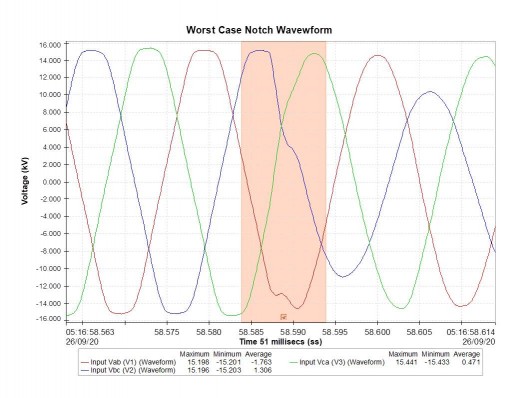
Changes to Power Quality Requirements
The Energy Networks Association (ENA) has recently released an updated version of its EREC G5 harmonics standard, moving from G5/4 to the new G5/5 specification.
As an electronic design house and manufacturer of state-of-the-art Power Quality Analysers and Fault Level Monitors, Outram Research has closely examined the changes between the two versions to help power suppliers stay ahead of the curve.
We are pleased to make the G5/5 vs G5/4 summary report whitepaper – written by Dr Rob Weller – publicly available, which compares the new requirements versus those outlined in the previous version. However, to break it down, we have provided a summary of the key changes and important facets to consider in this guide.
Please get in touch if you would like a copy of our example G5/5 survey report achieved with measurements using the PM7000 Power Quality Analyser.
Key Changes in EREC G5/5
Expanded Frequency Range
The planning and compatibility levels in EREC G5/5 now extend up to 5 kHz (100th harmonic), a significant increase from the previous 2.5 kHz (50th harmonic) limit in G5/4. This expansion ensures harmonics measurements capture a broader spectrum of power quality issues.
Interharmonics Limits Revised
EREC G5/5 provides clearer definitions and measurement guidelines (up to 4990 Hz) for interharmonics and subharmonics, based on IEC 61000-4-30 and IEC 61000-4-7 standards. This helps power suppliers better quantify the impact of these disturbances on their networks.
Enhanced Voltage Notch Requirements
The new G5/5 standard includes an additional requirement on the waveform of voltage notches, providing a more comprehensive power quality assessment.
Planning and Compatibility Alterations
Section 5 of EREC G5 Issue 5 now contains updates and adjustments to the planning and compatibility levels as seen in EREC G5 Issue 4. The planning and compatibility values in G5/5 have been changed to the higher option of those in international standards, with the voltage ranges selected to better align with GB system voltage level measurements.
Streamlined Connection Processes
EREC G5/5 introduces several refinements to the connection processes as well.
Stage 1: Simplified Assessment
The revised Stage 1 connection process is designed to be more accessible, making it easier for those with limited experience in applying the standard to navigate connection requirements.
Stage 2: Tiered Evaluation
Stage 2 assessments follow a linear, step-by-step approach, with evaluations applied in sub-stages for connections at voltages below 33 kV or where Stage 1 assessments have failed.
Stage 3: Harmonic Headroom Apportionment
The Stage 3 process outlines a method for apportioning harmonic headroom, setting minimum harmonic specifications for new connections.
Demonstrating G5/5 Compliance
EREC G5/5 now includes detailed guidance on how new users can provide evidence of compliance with the harmonics limits set by the Network Operator responsible for the connection.
Preparing for Concurrent Connections
The updated standard also addresses the challenge of setting limits for multiple new users seeking to connect to the same or electrically close nodes simultaneously.
Hire Power Quality Analysers With G5/5 Options
As an expert in power quality measurement and analysis, Outram Research is well-positioned to help you navigate the evolving EREC G5/5 standard. Our portable PM700 or rack-mounted PM7500 power quality analyser now both come with the G5/5 (Enhanced Harmonic) option, both of which are available for general hire in the UK and for sale to Network Operators.
Our fully qualified on-site power quality engineers can carry out background harmonic surveys and publish G5/5 findings reports for those unfamiliar with how to hook up power quality analysers.
Contact us to learn more about our example G5/5 survey reports and how our advanced products can support your compliance efforts.
